Street Marking Explanations#
See also: How SMP works | Street Treatments | Repairs | FAQ's | How SMP works | Street Markings | Awards
What's Up With The Pink Paint?#
Access Ramp Installation#
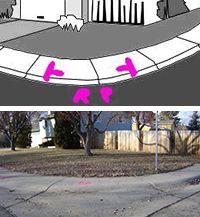
When this symbol appears at an intersection, it means a pedestrian access ramp will be constructed at that location.
Asphalt Replacement#
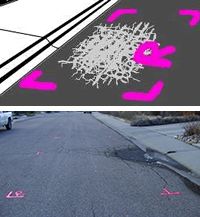
The four corners mark the limits of this repair. The symbol in the middle tells the contractor the type of repair. In this case, the letter "R" says that the existing asphalt inside the corner markers is too badly damaged to simply overlay. The asphalt must be removed, the material underneath re-compacted and a new asphalt patch installed.
Asphalt Grinding#
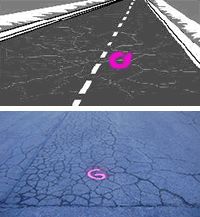
In this case, the area to be repaired is marked with a "G". This means the existing asphalt is to be removed to a specified depth by a pavement grinder (a large piece of equipment with teeth that chew up asphalt and place it directly in a truck to be disposed of). The hole is then filled with new asphalt.
Concrete Replacement#
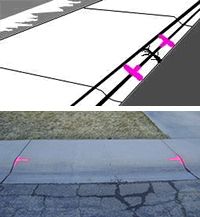
These symbols appear on damaged curb and gutter, and always appears in pairs. They mark the limits of damaged concrete to be removed and replaced. This work is often done to correct drainage problems and prevent water from seeping under new pavement. In some locations "SUR" has been marked on concrete. This designates that a more detailed survey of the area will be completed before the scope of repairs is determined.
Foam Injection#
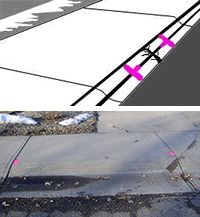
These dots represent Concrete Restoration. Concrete restoration addresses voids beneath the slab leading to instability, trip hazards, cracking, sinking and ponding problems. A small hole is drilled in concrete which is structurally sound but has settled to some degree. Foam is injected through the drilled hole, which then expands to permanently raise the slab. The target elevation adjustment is 2” or less, however settlements up to 3” have been successfully remedied. On average, the cost of foam injection is half that of concrete replacement with virtually no disruption or mess.